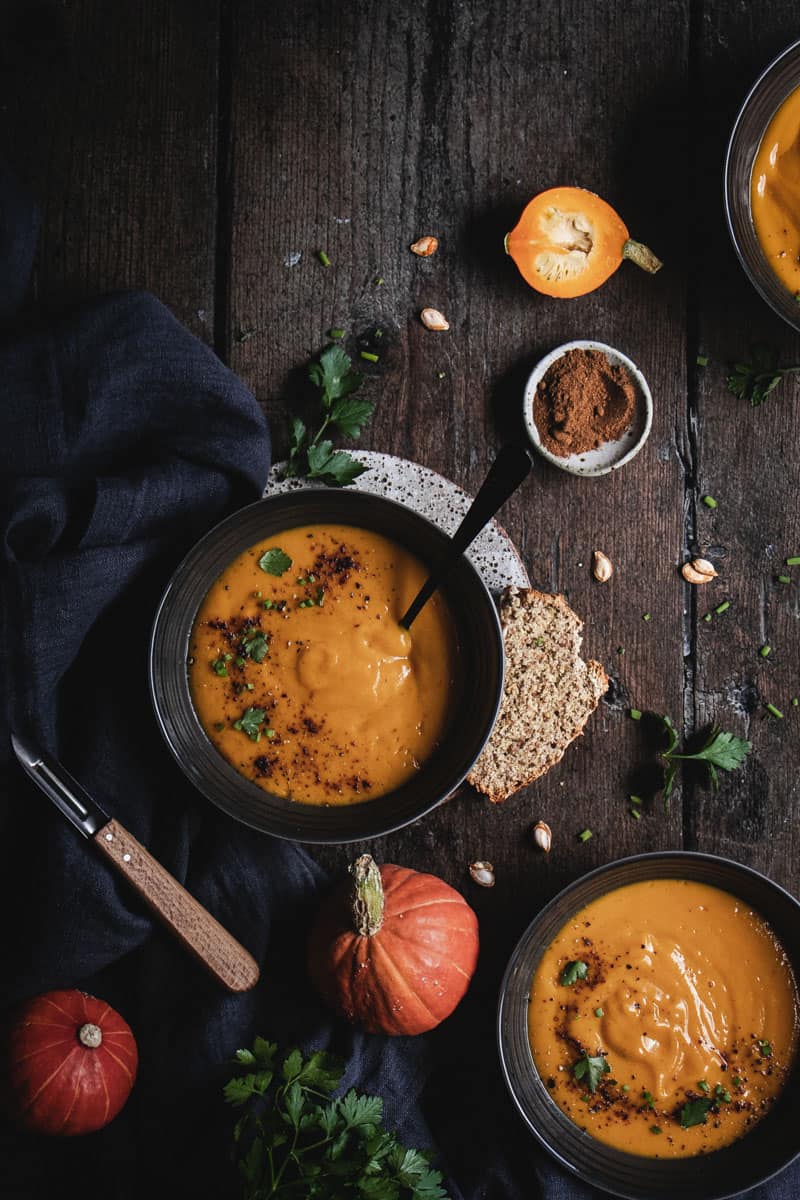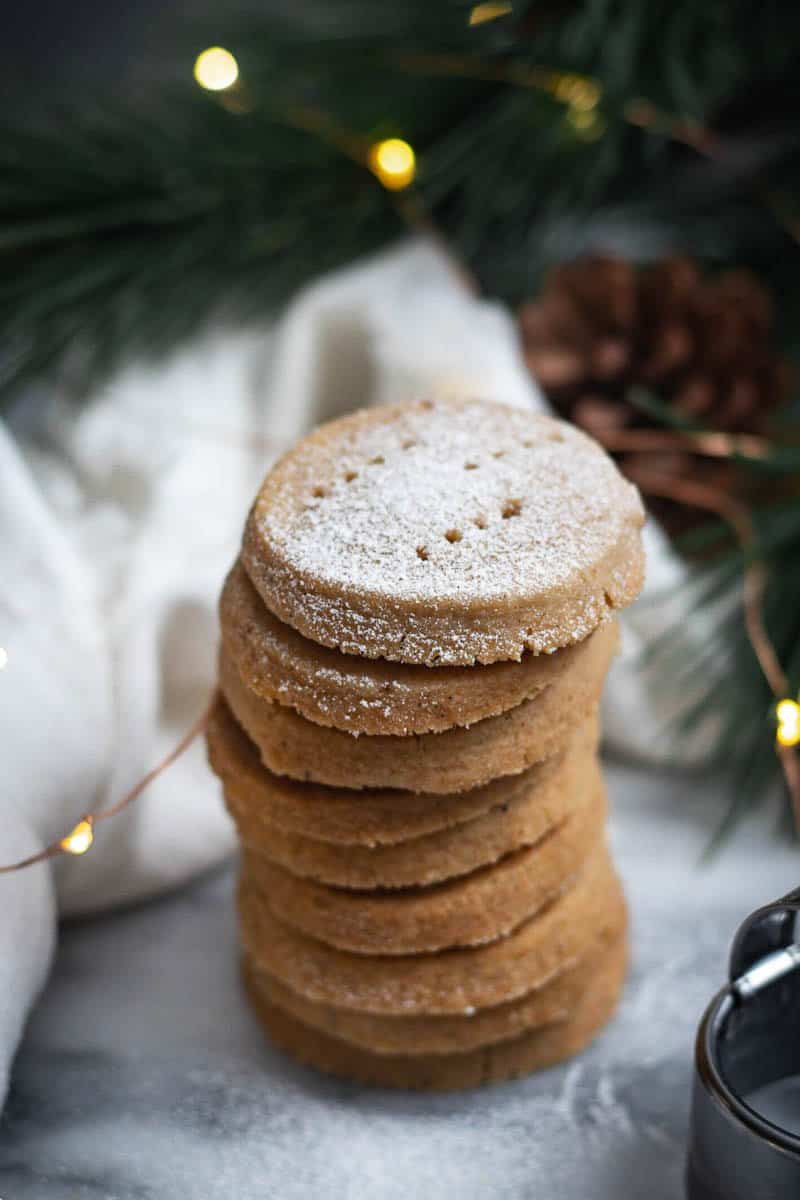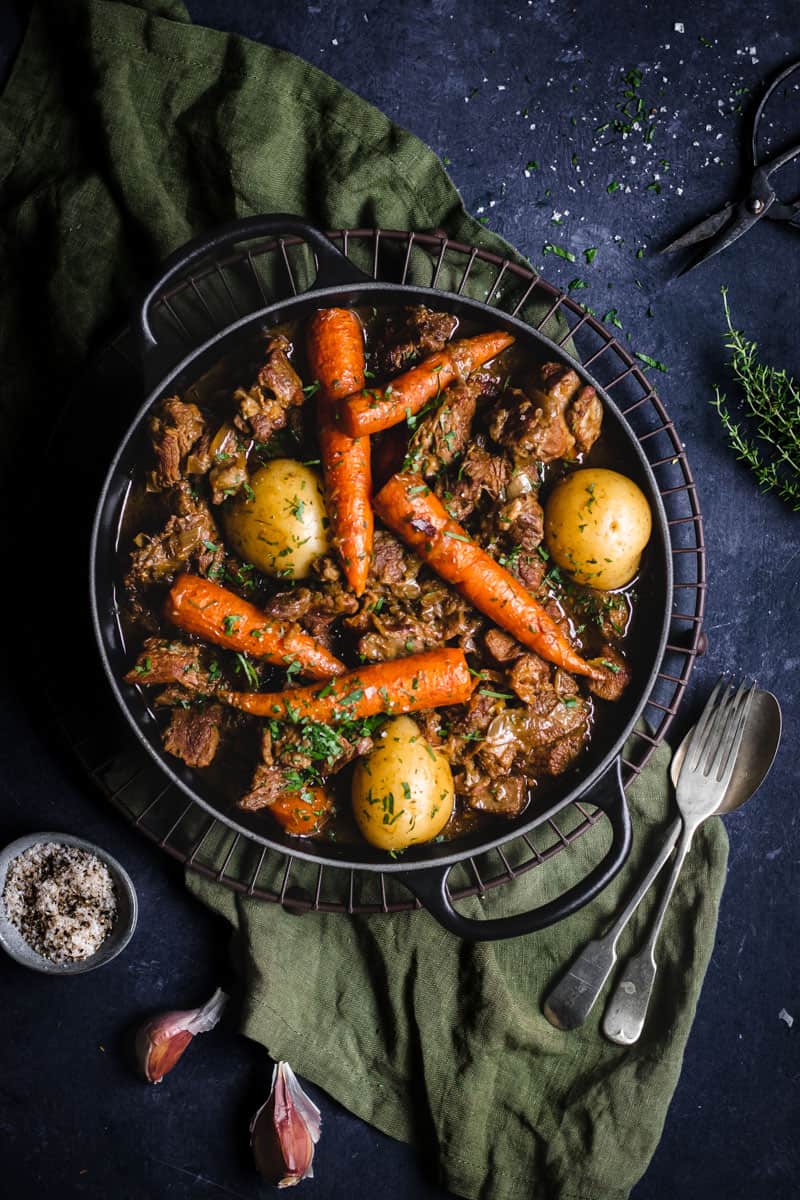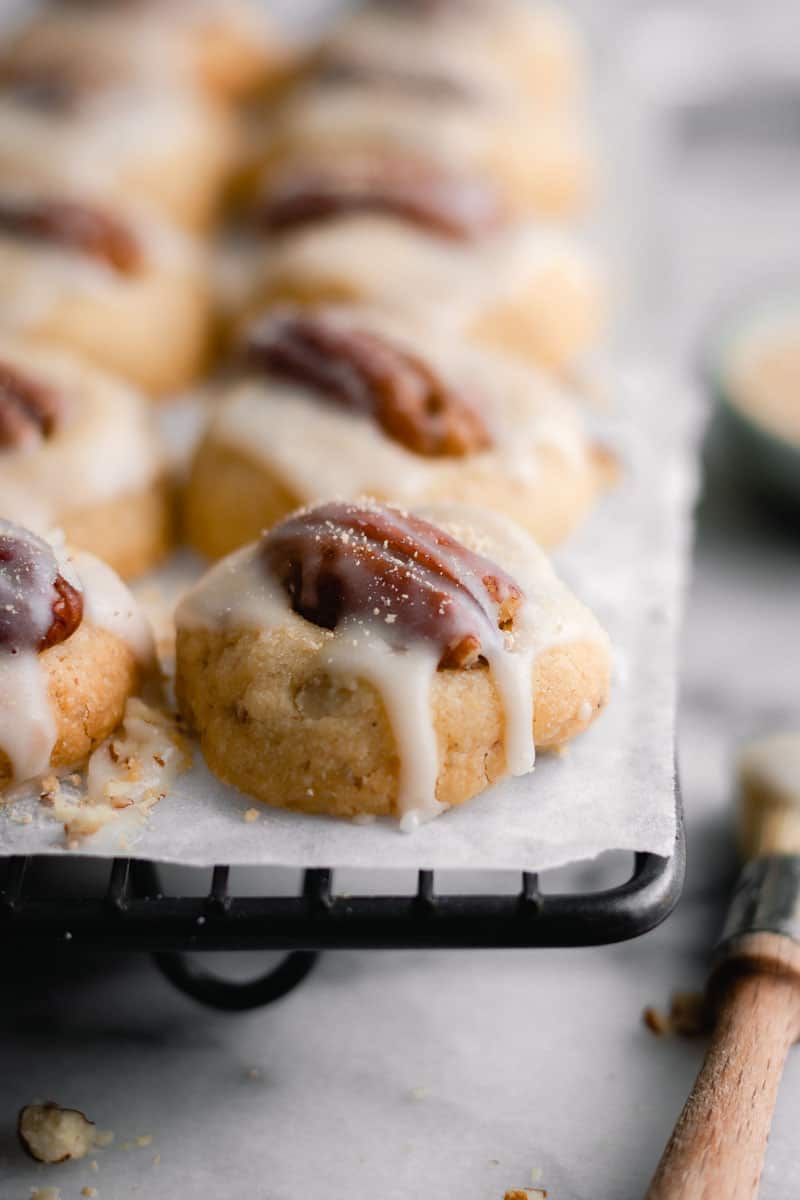How to make a Seafood Platter
Australian Summers are known for sunny-filled beach days, BBQs, and seafood. It’s a rich, food-filled culture that anyone who has ever stood in line for seafood at the Sydney Seafood Markets on Christmas Eve can attest to. A fresh seafood platter is the pinnacle of many festive gatherings and special occasions. A plate or board filled with seasonal, fresh seafood, simply prepared for grazing.
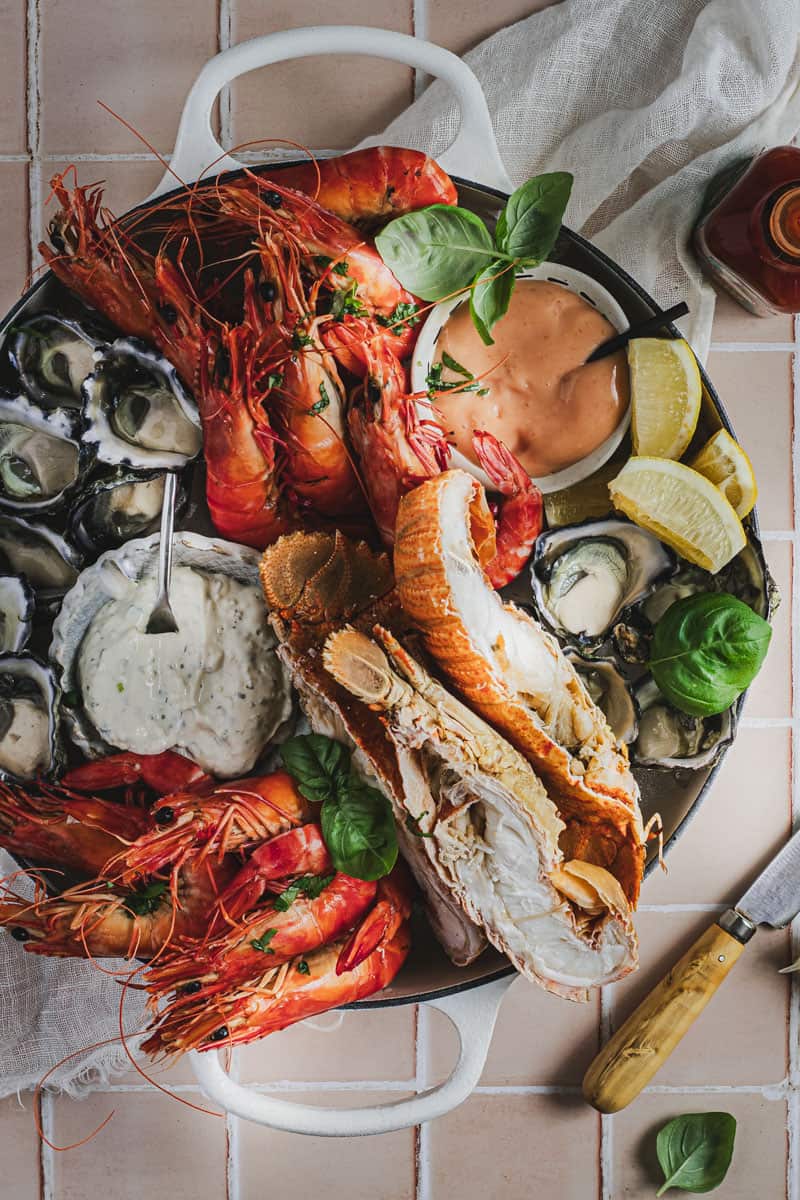
We are a seafood-loving family. It wasn’t until I lived overseas for a few years that I realized how truly special the seafood in Australia actually is. Aside from the biggest (and BEST) prawns, our oysters are outstanding as are the fish, octopus, and bugs to name a few. We really are a bit spoilt for choice!
While many think of a Seafood platter for Christmas Day or even Easter, in the last few years we’ve done a seafood platter for New Year’s Eve instead, opting for roast dinner on Christmas Day. Add a bottle of bubbles, some tunes, and a hot afternoon by the pool and you have a party!
Why you’ll love this easy-to-assemble seafood platter
It’s easy to substitute if you don’t have prawns, oysters, and bugs readily available. It’s really about utilizing the freshest cooked seafood in your region.
If crab and lobster are readily available, then crab legs and lobster tails make a great addition to any seafood platter. Crab legs can be quite hit or miss in Australia so I rarely include them. Lobsters are just so damn expensive. And very different (they are actually called rock lobsters) from the large lobsters that you find in America. Work with a variety of seafood that’s in season, fresh and local and you can’t go wrong!
There is also no cooking involved! Buy, plate, and serve. Oh and cut up a few fresh lemons into wedges. Simple!
What you need to get started
- Cooked Prawns – Large tiger prawns are generally my go-to because small prawns are a pain to peel. In Australia, cooked prawns are far more common than uncooked. While I purchase both for different dishes, I’m not about to start cooking green prawns myself if we are just eating them cold with condiments.
HINT – Ask your fishmonger for their advice if there are a couple of prawns around the same size to choose from. They’ve never steered me wrong yet! - Freshly shucked oysters – Sydney Rock oysters are one of the most popular around here, however, we’ve had some really good ones from the South Coast as well.
- Cooked bugs – No I’m not talking about caterpillars! Bugs are slipper lobsters found in Australian waters but with a taste similar to crab. The two most popular that you’ll find are Moreton Bay bugs and Balmain Bugs. They are interesting little critters that taste delicious cold on a platter or BBQ’d and drizzled with a herb and garlic butter.
If you buy raw bugs, you can easily cook them by plunging them into salted boiling water for approx 6 minutes. Cool in ice water and then cut in half, clean, and serve! - Ice – I picked up a bag of ice from our local supermarket. With the weather around New Year sometimes hitting 40 degrees Celsius, I’ve always found that serving your cold seafood platter on ice just makes good sense. If the weather isn’t hot for this to be a concern you can also serve seafood on a bed of rock salt.
- Seafood Condiments. As a general starting place, I would suggest seafood sauce (cocktail sauce) and tartare sauce, but the world is your oyster (pardon the pun) so go forth and experiment! Soy sauce, chili sauces, and flavored aioli like chipotle and lime mayo are also great additions.
- Lemon wedges
- A large serving dish. A little trick I learned a couple of years ago is to serve your seafood in an enamel cast iron pot. By adding the ice to the pot, the Dutch oven acts as a fridge with its amazing insulation properties, and keeps your seafood super cold! Just remove the lid once you are ready to eat and you are good to go.
What I use… My Le Creuset 30cm shallow casserole is perfect for a large seafood platter for 4!
The details
- Lay a bed of ice on the base of a cast iron shallow casserole or platter.
- Pop the seafood condiments into dipping dishes and place on the platter.
- Arrange the seafood around the dipping sauces.
- Finish with lemon wedges.
Ps, Don’t forget a finger bowl on the side!

How to store leftover seafood
As a general rule, I always assume seafood is good for 2-3 days from purchase. To store prawns and bugs, I place them in bowls with a little ice and a wet cloth over the top. Oysters should be stored either in a covered airtight container or in a bowl covered with clingfilm.
Seafood should not smell “fishy” or be slimy to the touch. This is a sure sign that your seafood has expired and should be thrown out.
HINT… In Summer (over 32 degrees) you should never leave your seafood out of the fridge for longer than an hour to avoid the risk of foodborne illness.
Cook’s notes
Buy your fresh seafood from a dedicated fishmonger as opposed to a grocery store. They generally have so much more expertise in preparing, cooking, and storing seafood. Not to mention, will kindly clean and debone any purchases if you ask nicely!
Ok, let’s take this up a notch! A few more seafood platter ideas…
- Add some BBQ seafood elements. Grilled scallops in the half shell, lobster, and Thai baby octopus all come to mind.
- A pot of steaming mussels in a white wine, garlic, and shallot broth occasionally makes an appearance on my seafood platter.
- Get a nice big French oven on top of the stove and some frying oil. Deep fry some salt and pepper calamari, whitebait, crab cakes, crumbed prawns, or battered fish pieces to add that seafood basket element.
- Smoked salmon slices or even canned seafood are quick and easy additions to a cold seafood platter. I’m looking at you Ortiz anchovies!
Here are some more BBQ recipes you might like
- Curried Chicken Kebab Salad with Kasundi Mayonnaise
- Cheese and Bacon Rolls
- Nanna’s Best Ever Beef Rissoles Recipe
- Roasted Balsamic Beetroot and Carrot Salad with Labneh
- The BEST Potato Salad
x
Print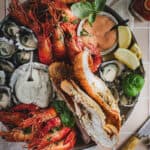
How to make a Seafood Platter
- Prep Time: 10 minutes
- Total Time: 10 minutes
- Yield: 4 serves 1x
- Category: Seafood
- Method: No-bake
- Cuisine: Australian
Description
A seafood platter is the pinnacle of many festive gatherings. Filled with fresh seafood, simply prepared it’s the ultimate share plate.
Ingredients
- 800g cooked prawns
- 1 dozen fresh oysters
- 2 Morton Bay bugs
- fresh lemons cut into wedges
- A selection of sauces that pair well with seafood – I use seafood sauce and tartare sauce.
Instructions
- Lay a bed of ice on the base of a cast iron shallow casserole or platter.
- Pop the seafood condiments into dipping dishes and place on the platter.
- Arrange the seafood around the dipping sauces.
- Finish with lemon wedges.
Notes
A finger bowl is an essential part of a seafood platter. A small bowl full of water with a slice of lemon is sufficient for people to wash their fingers in between bites.


